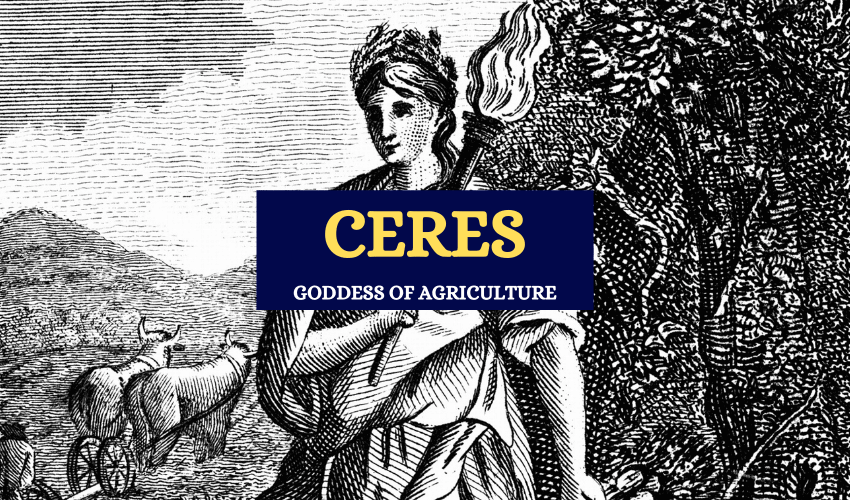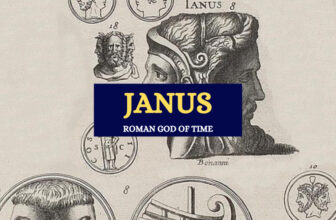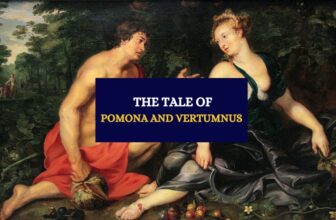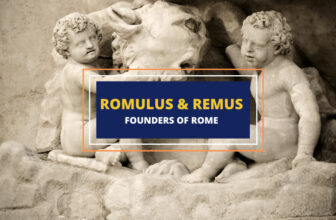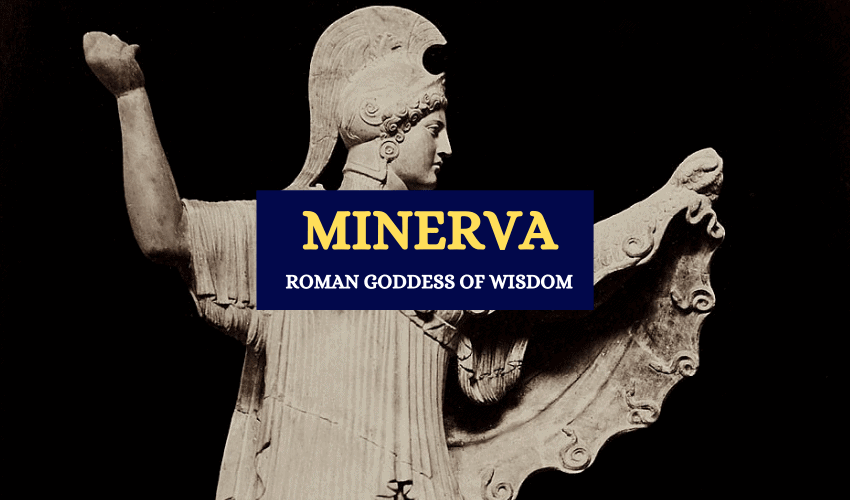
Table of Contents
In Roman mythology, Minerva was the virgin goddess of wisdom as well as several other domains including medicine, strategic warfare and strategy. Minerva’s name stems from the Proto-Italic and Proto-Indo-European words ‘meneswo’ (meaning understanding or intelligence) and ‘menos’ (meaning thought).
Minerva was equated with the Greek goddess Athena and was one of the three deities of the Capitoline Triad, along with Juno and Jupiter. However, her actual origins go back to the time of the Etruscans, before the Romans.
The Birth of Minerva
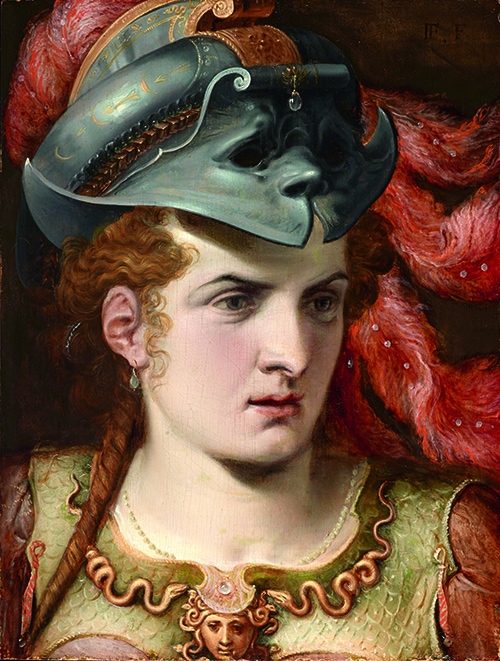
Minerva was the daughter of the Titaness Metis, and of the supreme god of the Roman pantheon, Jupiter. According to the myth, Jupiter raped Metis, so she tried to escape from him by shapeshifting. When Jupiter found out that Metis was pregnant, however, he realized that he couldn’t let her escape, because of a prophecy that his own son would one day overthrow him just as he had overthrown his own father.
Jupiter feared that Metis was expecting a male child who would grow more powerful than himself and would take full control of the heavens. To prevent this, he tricked Metis into shapeshifting into a fly and then swallowed her whole.
Metis survived inside Jupiter’s body, however, and soon gave birth to a daughter, Minerva. While she was still inside Jupiter, Metis forged armor and weapons for her daughter. Jupiter was in a lot of pain because of all the ringing and pounding that was constantly going on in his head, so he sought the help of Vulcan, the god of fire. Vulcan smashed Jupiter’s head with a hammer, in an attempt to remove the thing that was causing him pain and from this wound, Minerva emerged.
She was born as a fully grown adult, dressed completely in battle armor and holding the weapons that her mother had forged for her. Despite attempting to prevent her birth, Minerva would later become Jupiter’s favorite child.
In some versions of this story, Metis continued to stay inside Jupiter’s head after Minerva was born and became the main source of his wisdom. She was always there to advise him and he listened to her every word.
Depictions and Symbolism of Minerva
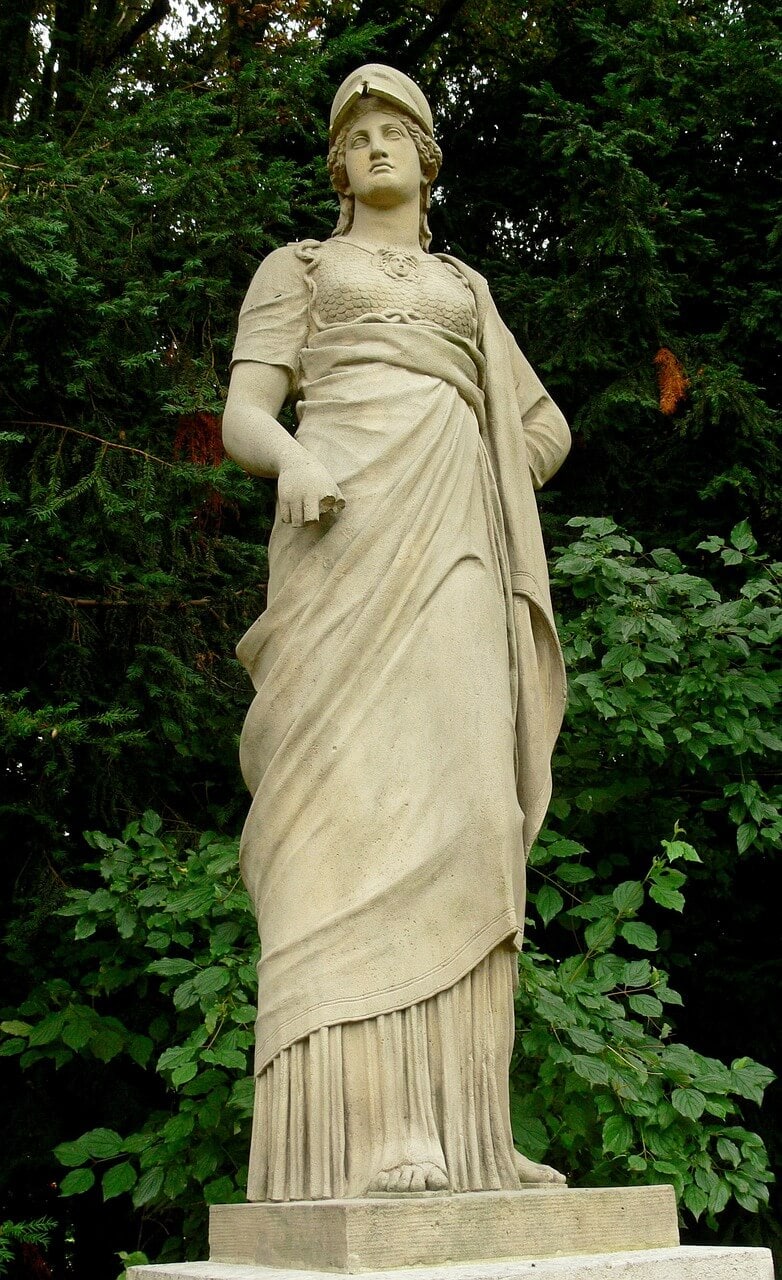
Minerva is usually portrayed wearing a long, woolen tunic called a ‘chiton’, a uniform commonly worn in Ancient Greece. Most sculptures of Minerva show her wearing a helmet, with a spear with one hand and a shield in the other, representing war as one of her domains.
The olive branch is another symbol associated with the goddess. Although she was a warrior, Minerva had sympathy for the defeated and is often portrayed offering an olive branch to them. She also created the olive tree, making this a prominent symbol of the goddess.
After Minerva began to be equated with Athena, the owl became her main symbol and sacred creature. Usually called the ‘owl of Minerva’, this nocturnal bird symbolizes the goddess’ association with knowledge and wisdom. The olive tree and snake also have similar symbolism but unlike the owl, they’re less commonly seen in depictions of her.
While most other goddess were depicted as elegant maidens, Minerve was typically portrayed as a tall, beautiful woman with a muscular build and an athletic appearance.
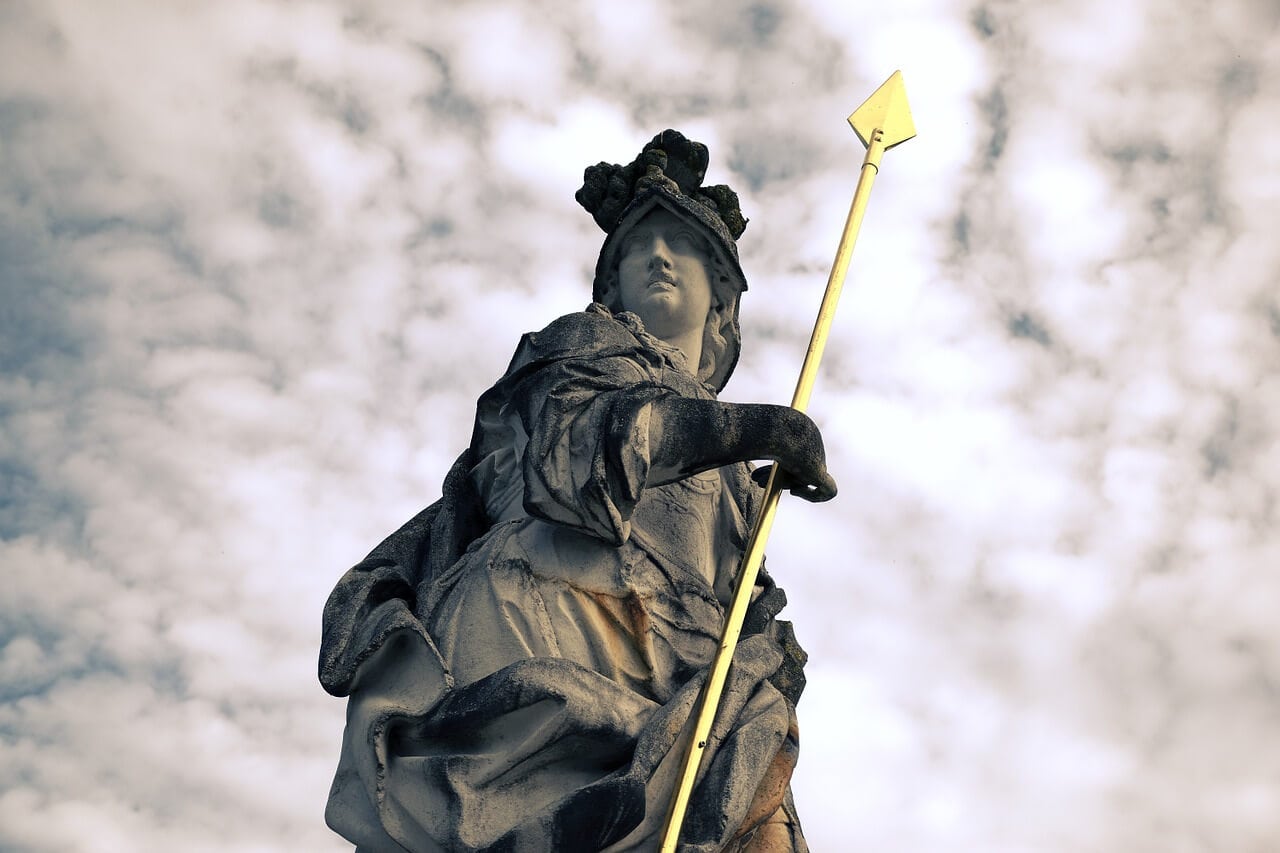
Minerva’s Role in Greek Mythology
Although Minerva was the goddess of wisdom, she was also in charge of many other domains including courage, civilization, inspiration, justice and law, mathematics, strategic warfare, crafts, skill, strategy, strength and also the arts.
Minerva was most specifically known for her skills in battle strategy and was commonly portrayed as a companion of famous heroes. She was also the patron goddess of heroic endeavors. In addition to all her domains, she became the goddess of prudent restraint, good counsel and practical insight as well.
Arachne and Minerva
Minerva’s competition with Arachne is a popular myth in which the goddess appears. Arachne was a highly skilled weaver, respected by both mortals and gods. She was always praised for her exquisite work. However, over time Arachne became arrogant and began to boast about her skills to anyone who would listen. She even went so far as to challenge Minerva to a weaving contest.
Minerva disguised herself as an old woman and tried to warn the weaver about her unpleasant behavior but Arachne didn’t listen to her. Minerva revealed her true identity to Arachne, accepting her challenge.
Arachne wove a beautiful cloth that depicted the story of Europa (some say it depicted the shortcomings of all the gods). It was so well done that all those who saw it believed the images to be real. Minerva was inferior to Arachne in the art of weaving and the cloth she wove had images of all the mortals who were foolish enough to challenge the gods. It was a final reminder to Arachne not to challenge the gods.
When she saw Arachne’s work and the themes they portrayed, Minerva felt slighted and was outraged. She tore Arachne’s cloth to bits and made Arachne feel so ashamed of herself for what she’d done that she committed suicide by hanging herself.
Minerva then felt pity for Arachne and brought her back from the dead. However, as punishment for insulting a goddess, Minerva turned Arachne into a large spider. Arachne was to hang from a web for eternity as this would remind her of her actions and how she’d offended the gods.
Minerva and Aglauros
Ovid’s Metamorphoses tells a story of Aglauros, an Athenian princess who tried to help Mercury, a Roman god, seduce her sister, Herse. Minerva found out about what Aglauros had tried to do and she was furious with her. She sought the help of Invidia, the goddess of envy, who made Aglauros so envious of others’ good fortune that she turned to stone. As a result, Mercury’s attempt to seduce Herse was unsuccessful.
Medusa and Minerva
One of the most famous myths featuring Minerva also features another widely famous creature in Greek mythology – Medusa, the Gorgon. There are many variations to this story, but the most popular goes as follows.
Medusa was once a woman of great beauty and this made Minerva extremely jealous. Minerva discovered Medusa and Neptune (Poseidon) kissing in her temple and she was angered by their disrespectful behavior. In most versions of the story Neptune raped Medusa in Minerva’s temple and Medusa was not at fault. However, because of her jealousy and anger, Minerva cursed her anyway.
Minerva’s curse turned Medusa into a hideous monster with hissing snakes for hair. Medusa became known far and wide as the terrifying monster whose gaze turned any living creature she looked at into stone.
Medusa lived in isolation and grief until the hero Perseus finally found her. With Minerva’s advise, Perseus was able to kill Medusa. He took her severed head to Minerva, who placed it on her Aegis and used it as a form of protection whenever she went into battle.
Minerva and Pegasus
As Perseus beheaded Medusa, some of her blood fell on the ground and from it sprang Pegasus, a mythical winged horse. Medusa caught Pegasus and tamed the horse before she gifted it to the Muses. According to ancient sources, the Hippocrene fountain was created by a kick from Pegasus’ hoof.
Later, Minerva helped the great Greek hero Bellerophon to fight the Chimera by giving him Pegasus’ golden bridle. It was only when the horse saw Bellerophon holding the bridle that it allowed him to mount and together they defeated the Chimera.
Minerva and Hercules
Minerva also made an appearance in a myth with the hero Hercules. It’s said that she helped Hercules kill the Hydra, a terrible monster with multiple heads. It was Minerva who gave Hercules the golden sword which he used to kill the beast.
The Invention of the Flute
Some sources say that it was Minerva who invented the flute by making holes in a piece of boxwood. She loved the music that she made with it but she was embarrassed when she saw her reflection in water and realized how her cheeks puffed out when she played it.
Minerva was also angry with Venus and Juno for mocking the way she looked when she played the instrument and she threw it away. Before doing so, she placed a curse on the flute so that anyone who picked it up would be doomed to die.
Minerva Helps Odysseus
According to Hyginus, Minerva felt sympathy for the hero Odysseus who was desperate to bring back his wife from the dead. She assisted Odysseus by changing his appearance several times in order to protect the hero.
Worship of Minerva
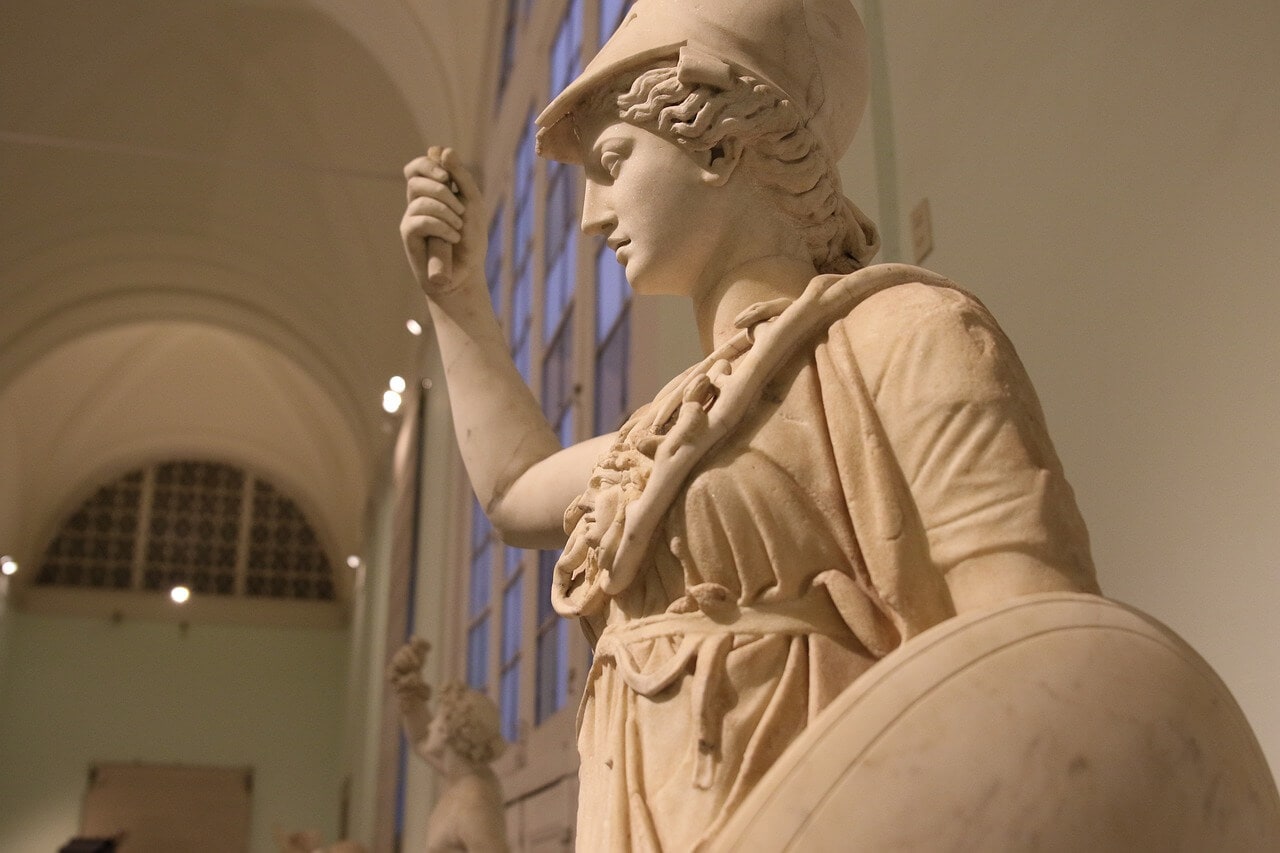
Minerva was worshipped extensively throughout Rome. She was worshipped alongside Jupiter and Juno as part of the Capitoline Triad, three deities who held an central position in Roman religion. She was also one of the three virgin goddesses, along with Diana and Vesta.
Minerva held several roles and titles, including:
- Minerva Achaea – goddess of Lucera in Apulia
- Minerva Medica – the goddess of medicine and physicians
- Minerva Armipotens – goddess of warfare and strategy
Worship of Minerva spread not only throughout the Roman empire but also throughout the rest of Italy and many other parts of Europe. There were several temples dedicated to her worship, one of the most prominent being the ‘Temple of Minerva Medica’ built on the Capitoline Hill. The Romans held a festival sacred to the goddess on the Quinquatria day. It was a five-day festival that took place from the 19th to the 23rd of March, just after the Ides of March.
Over time, worship of Minerva began to deteriorate. Minerva remains an important deity of the Roman pantheon and as the patron goddess of wisdom, she’s often featured at educational establishments.
In Brief
Today sculptures of the goddess of wisdom are commonly found in libraries and schools around the world. Although it’s been thousands of years since the time the Romans worshiped Minerva, she continues to be revered by many as a symbol of wisdom.




